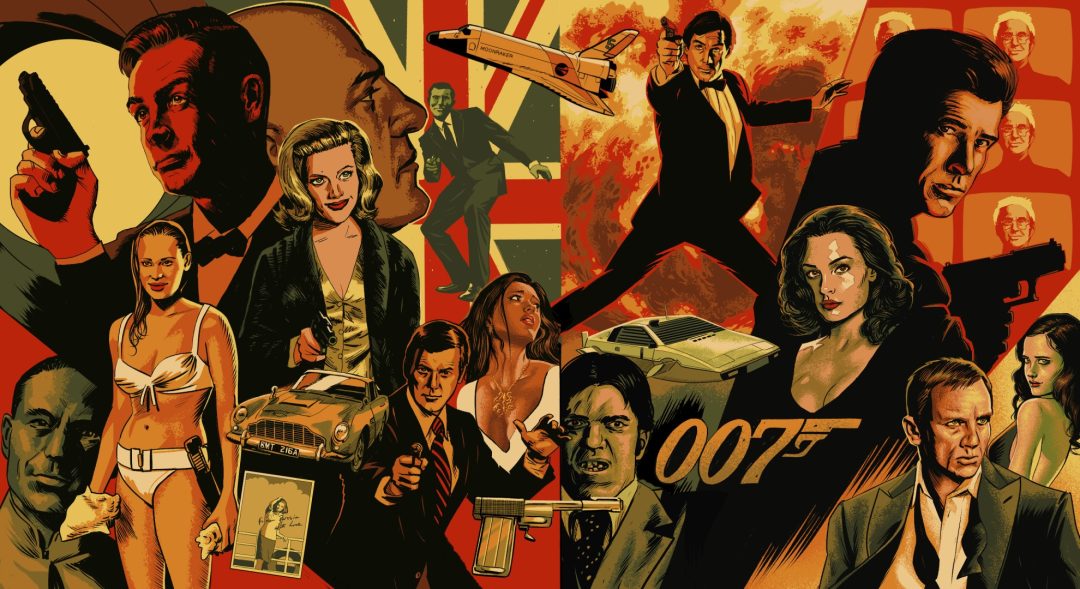The new guy was all settled in, and the Bond production line continued to motor along, delivering a new movie every two years. The Living Daylights had been a huge financial success and they were going to lean hard into this change in tone for Dalton’s next go around as 007. This next instalment would take both Bond and audiences into unfamiliar territory. There was also more legal trouble ahead, and the landscape of cinema was changing fast. Licence To Kill was heading directly into the storm.
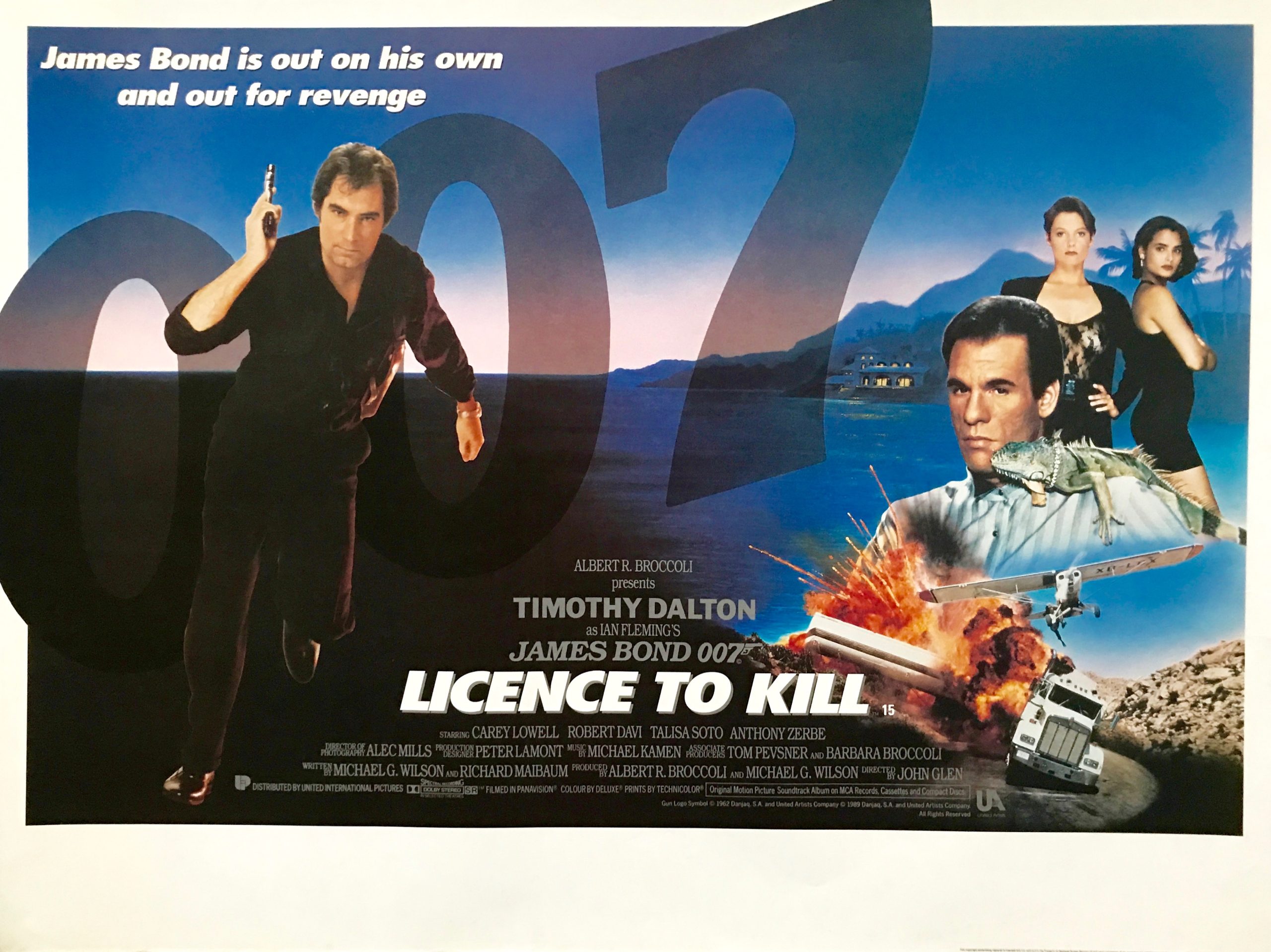
Licence To Kill – Behind The Scenes
Timothy Dalton’s darker and harder-edged portrayal of Bond was more faithful to the novels. Producer Cubby Broccoli and writers Michael G. Wilson and Richard Maibaum wanted to continue this tone while using locations the franchise had yet to visit.
The producers were invited to China by the Chinese government, and this matched some thoughts the writers had been having about a motorcycle chase along the Great Wall of China, and a fight among the Terracotta Army.
Wilson started to develop a plot around a ruthless drug lord based in the Golden Triangle. When The Last Emperor was released, Cubby felt it took away the novelty of filming in China in the late 1980s. He also had concerns over the Chinese government censoring the script and overseeing the shooting too closely. As a result that plan was shelved.
The central idea of the drug trade remained. Back at base, Brocolli was also struggling with costs, as the 1985 Films Act in the UK removed the Eady Levy that supported movies shot in Britain. This resulted in foreign artists being taxed more heavily.
Seeking a location for both the movie and the production, the idea of a Central American location fitted the central theme of narcotics. Broccoli found the Estudios Churubusco in Mexico City and negotiated hard to take over much of the facility. As a result, Licence To Kill became the first Bond film to be made entirely outside of the UK.
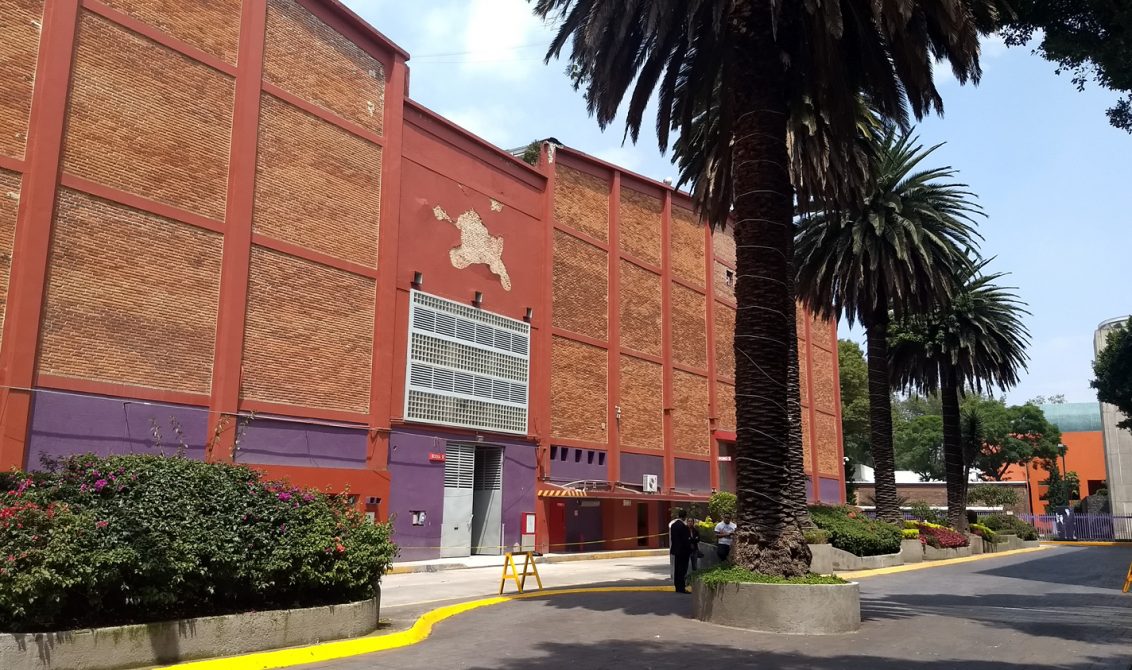
Even Moonraker, with the majority filmed in France, still made use of Pinewood Studios for some scenes. This was a complete de-camp to Mexico for everything and everyone. Only some post-production and sound re-recording would be carried out at Pinewood this time around.
The initial outline was further developed by the writing team of Wilson and Maibaum, but then the Writers Guild Of America went on strike and Maibaum could not work further on the script. Wilson had to go it alone.
The Central American location meant that the movie would end up having a US angle, as Bond was operating in their backyard. This led Wilson to the character of Felix Leiter and an unused sequence from the novel Live And Let Die where the villain, Mr Big, has Felix Leiter mauled by his captive shark. This idea was expanded to impact Felix’s wife, with echoes of Bond’s own brutally short marriage serving as his impetus to go on a mission of revenge.
Another influence on Wilson would be the unused plot from The Man With The Golden Gun novel, in which Bond infiltrates the villain’s operation and destroys it from within. Wilson also says Akira Kurosawa’s Yojimbo also inspired him, as well as Sergio Leone’s remake, A Fistful of Dollars. Alongside this, Wilson weaved in aspects of the Bond short story The Hildebrand Rarity where the character of Milton Krest and a dissatisfied mistress came from.
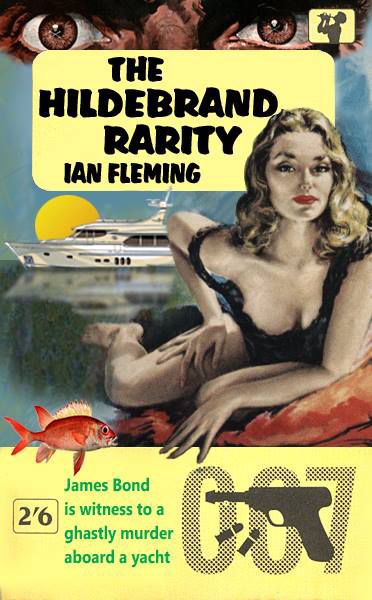
With an outline and initial drafts completed, and Bond’s resignation from MI6 to pursue vengeance as a central theme, what had been known as Bond 16 up until then now had a title – Licence Revoked.
Wilson created the Republic of Isthmus as a banana republic based on Panama, with the character of Sanchez bearing similarities to General Manuel Noriega. Press kits released to announce the production trumpeted the story as being “torn straight from the headlines of today’s newspapers”.
Now they had to cast it. Dalton was joined by returnees Robert Brown (M), Caroline Bliss (Moneypenny), and Desmond Llewellyn (Q). John Rhys-Davies was asked to reprise the role of General Pushkin from The Living Daylights in a cameo. He declined since he felt the character was not necessary to the plot.
Carey Lowell auditioned for the role of Pam Bouvier in jeans and a bomber jacket. This caught the attention of the producers among a sea of what she would describe as “Glamour Girls” and they felt she could carry the part of a CIA agent.
Lowell wore a wig for the scenes set in the United States, and a scene where Bouvier is given money and told by Bond to go and buy some new clothes was added so that Lowell’s own short hair could be used for the rest of the production.
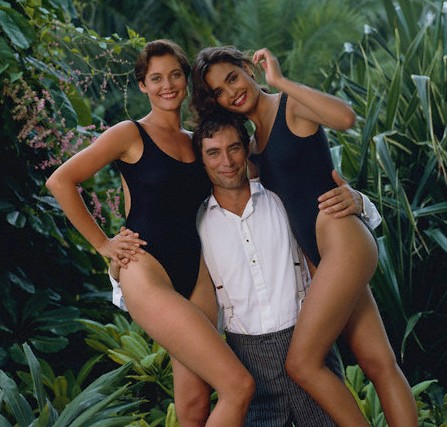
Robert Davi was suggested as a potential Sanchez by Broccoli’s daughter Tina and screenwriter Maibaum after they saw him in the television film Terrorist on Trial: The United States vs. Salim Ajami.
Davi was no slouch. After he got the role, he researched Colombian drug cartels extensively and perfected a Colombian accent. He method acted, staying in character at all times for the production. He also learned to scuba dive for his escape scenes. He read Casino Royale, and he shaped the character to be an evil mirror image of James Bond, as that was how Fleming had described Le Chiffre.
Davi was also active in the selection of Talisa Soto as Lupe Lamora, as out of the 12 candidates for the role she was the one he said “He would kill for”, making Sanchez’s obsession believable to him.
David Hedison became the only actor to return to the role of Felix Leiter in franchise history until Jeffrey Wright during the Craig movies. He had first played Leiter in Live And Let Die. Glen was reluctant to cast the 61-year-old actor, since the role included action scenes including parachuting. Eventually, he relented, mainly as Leiter’s fate in this movie would match the fate of the character in the novel Live And Let Die.
Shooting started in Mexico, doubling for the fictional Isthmus City. The Biblioteca del Banco de Mexico became the exterior of El Presidente Hotel, with the Casino Español providing the interiors for the Casino de Isthmus and the Teatro de la Ciudad as the exterior.
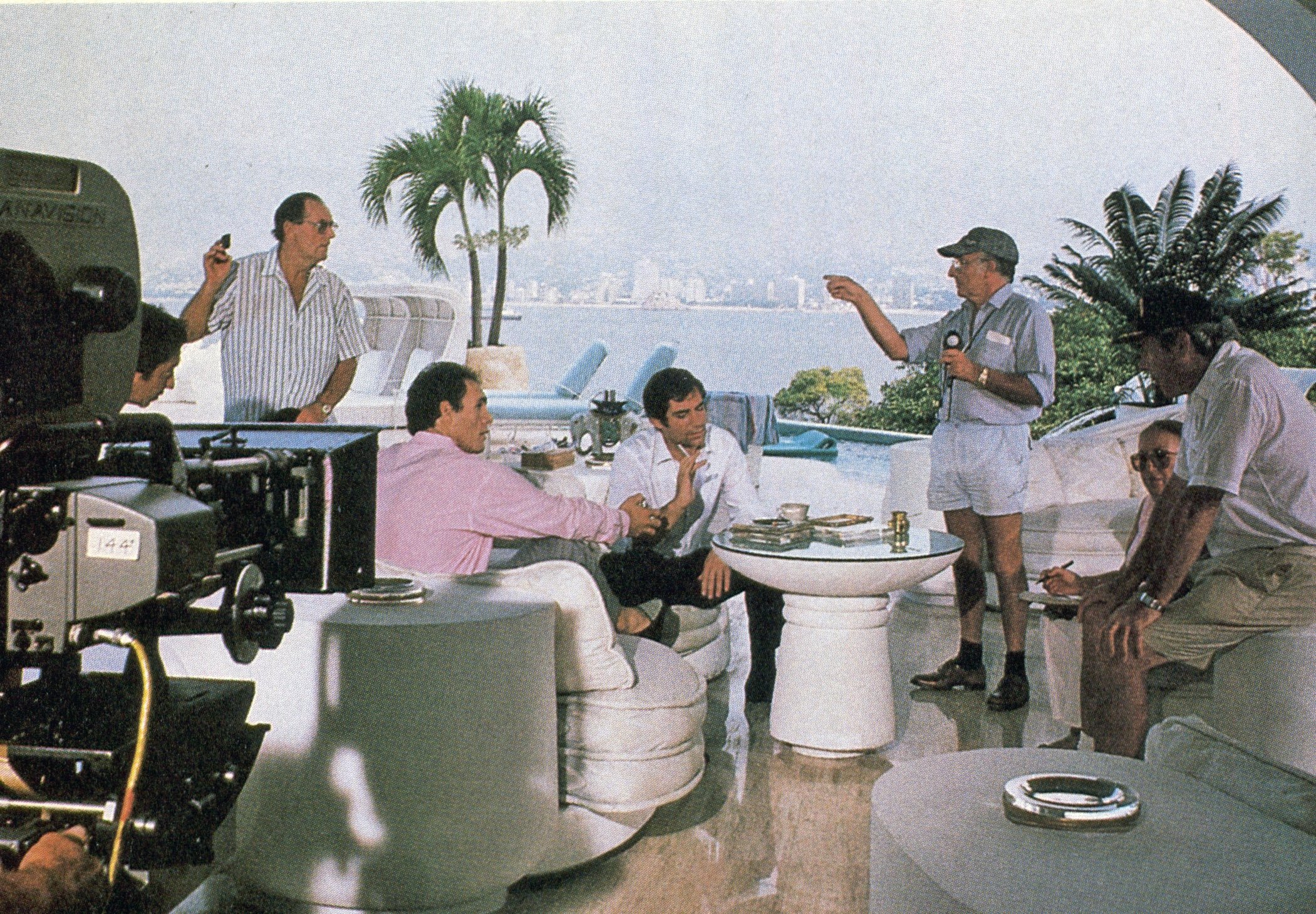
Villa Arabesque, on the coast in Acapulco was used for Sanchez’s villa. Meanwhile some underwater sequences were shot off the coast of Cancun. The Olympiatec Meditation Institute was shot at the Otomi Ceremonial Center in Temoaya.
La Rumorosa Mountain Pass in Tecate was used as the filming site for the tanker chase during the climax of the film. The road is famously dangerous due to its topography, large number of curves, many hairpin turns and huge dips. The crew were warned about shooting in this location by locals, who informed them many will not go up there as it is haunted by the ghosts of numerous drivers who died on the road. Strange occurrences and apparitions were said to be commonplace and the road is considered as cursed.

From the beginning, cast and crew report that it feels as if some dark forces want to thwart their plan. During filming, one accident after another happens. The crew members also witness a large number of paranormal phenomena, such as cars starting and stopping their engines by themselves in a parking lot. Crew members reported seeing people who shouldn’t be on set who vanished when challenged.
Director John Glen says:
“There was definitely a strange atmosphere on that stretch of road. The special effects boys where convinced there was something spooky about the place. If there was any doubt left in my mind, it was dispelled by a bizarre photograph.”
The photograph in question appeared to show a hellish hand emerging from a rigged explosion.
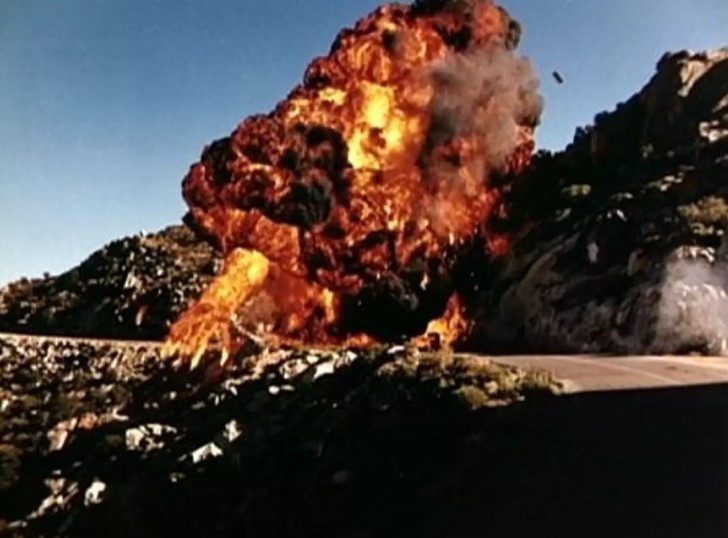
The event baffled the effects team, who were at a loss to explain why the flames and explosion should behave that way based on how they had rigged the whole effect. They maintained the charges, fuel and debris should not have moved in that direction.
Even more terrifying for the crew was the revelation that it was here that a bus full of nuns had gone over the edge and burst into flames several years before.
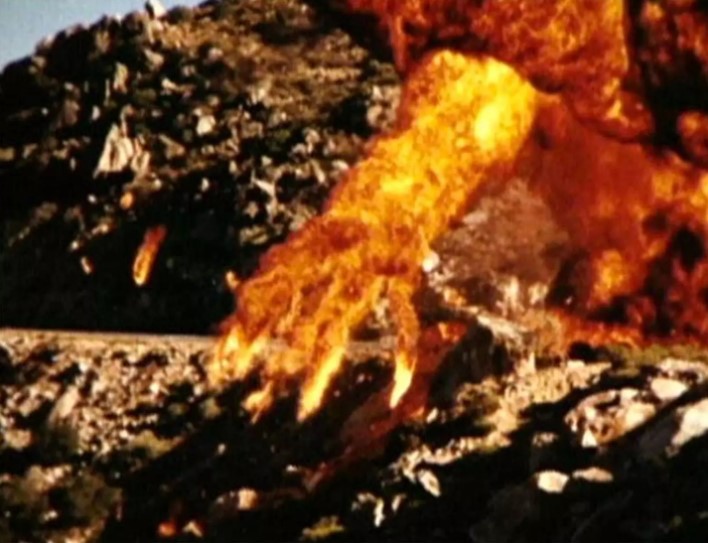
Putting the spooky occurrences on the haunted road behind them, the crew moved production to the Florida Keys, mainly Key West and the Seven Mile Bridge Famous landmarks like Ernest Hemingway House, Key West International Airport, and Mallory Square were all featured.
St. Mary’s Star of the Sea Church was the venue for Leiter’s wedding and Stephano’s House at 707 South Street became Leiter’s home. The US Coast Guard Pier at Key West doubled as the Isthmus City harbor where the Wavekrest arrives.
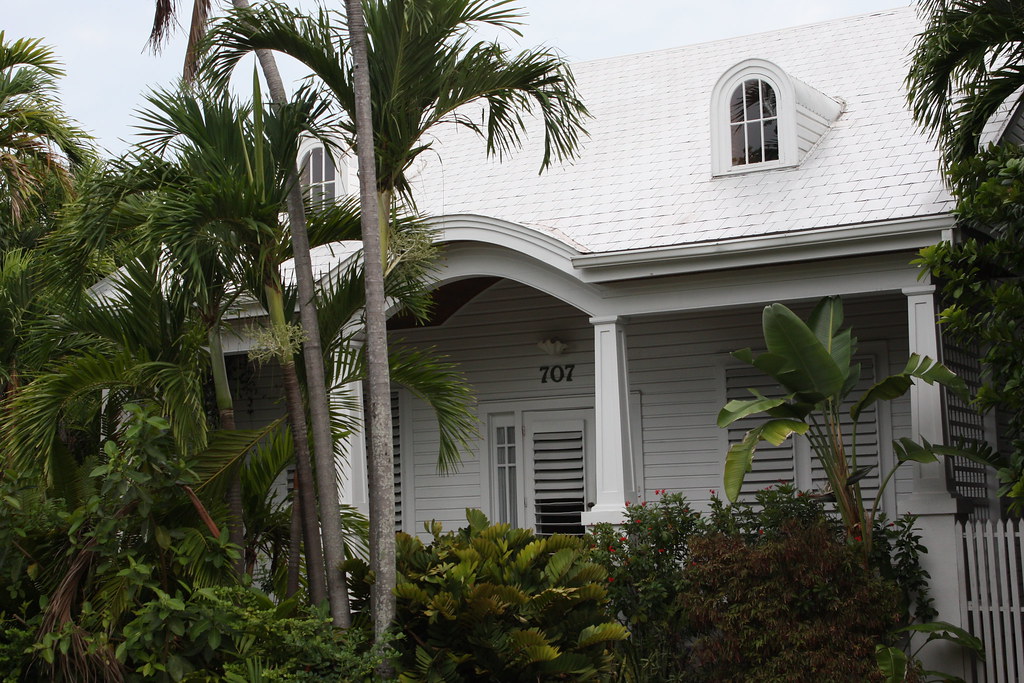
Meanwhile, in the skies over Florida, the scene where Sanchez’s plane is captured was being filmed. Stuntman Jake Lombard was filmed being lowered from a helicopter to the plane. Dalton himself was then securely fixed to film the closeups of Bond, in mid-air, tying up Sanchez’s plane with a cable.
The plane towed by the helicopter was a life-sized model created by special effects supervisor John Richardson and it really was flown across the keys hanging from a helicopter.
For Bond and Leiter’s arrival at the wedding, the wide shot was established using a special rig to lower the actors into shot. A malfunction of the harness equipment caused Hedison to fall on the pavement, and his injury caused him to limp for the rest of the production.
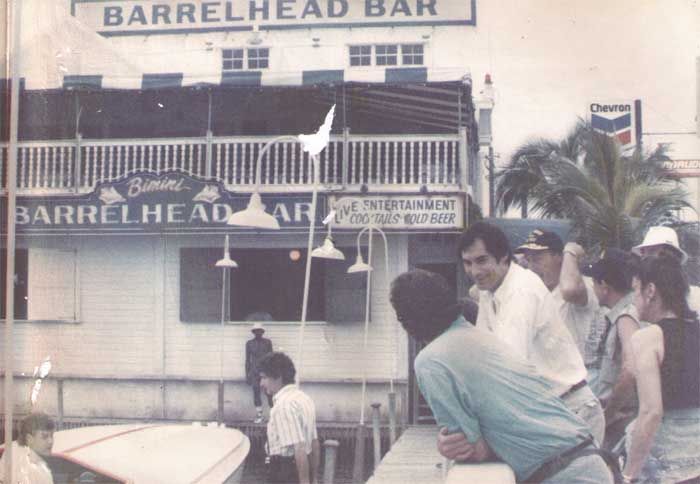
The barefoot waterskiing scene was completed by world champion Dave Reinhart, with some close-ups using Dalton on a special rig being towed through the water.
Production then moved back Mexico City. Before filming, Cubby Broccoli became ill and this portion of production was the first time in Bond history that Cubby had not been present at the location and around the studio.
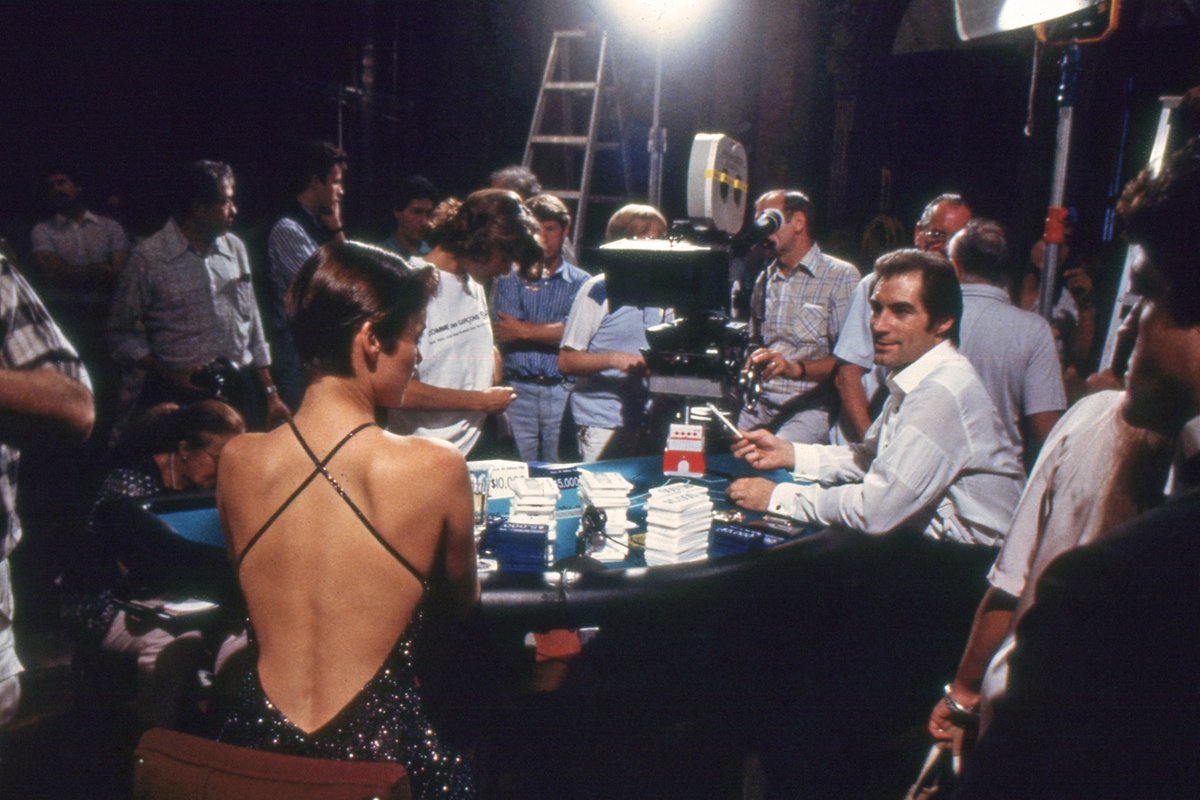
Here they filmed interiors and the infamous scene where Milton Krest, framed by Bond, is killed in a gruesome manner by Sanchez.
This was created using a prosthetic head from a mold of Anthony Zerbe’s face. The finished effect was so gruesome that it was heavily cut and edited as it would have caused certification issues with the censors.
John Barry was undergoing surgery on his throat, so Michael Kamen was brought on board to create the score for the movie. He also collaborated with the guitarist who played the original James Bond riff, Vic Flick, and Eric Clapton to create a lyric free main title theme based around guitars. This was rejected by the producers who went with Gladys Knight, former lead singer of The Pips.
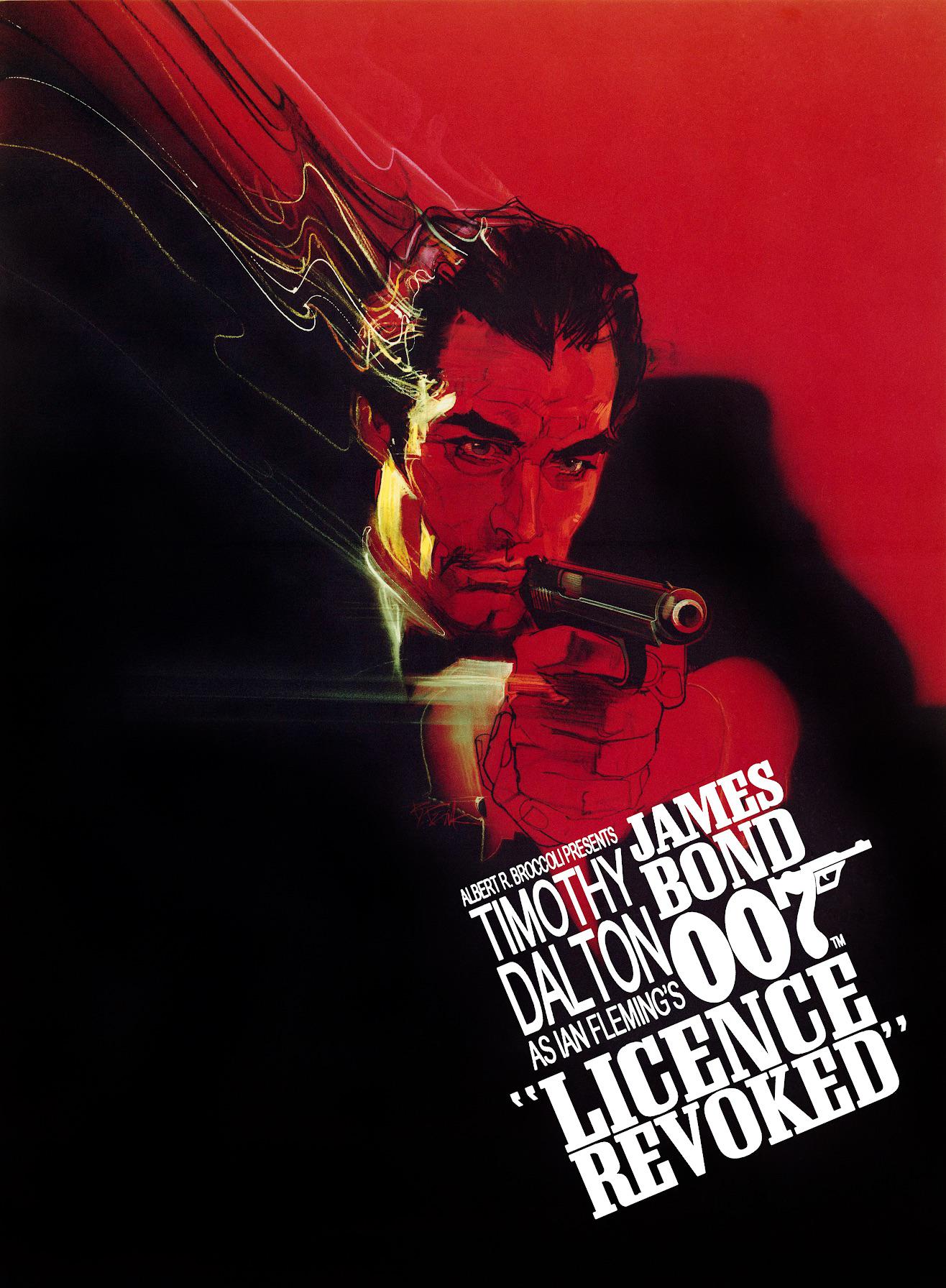
The movie still faced a number of challenges. It was still called Licence Revoked in all publicity. American test audiences reported being unable to disassociate “revoked” from the concept of losing their driving licence. At the last moment, the decision was made to rename the movie Licence To Kill.
This meant much of the publicity had to be abandoned and re-started. A whole campaign was scrapped right before release leaving little time to carry out the usual global publicity circus that went with a Bond movie.
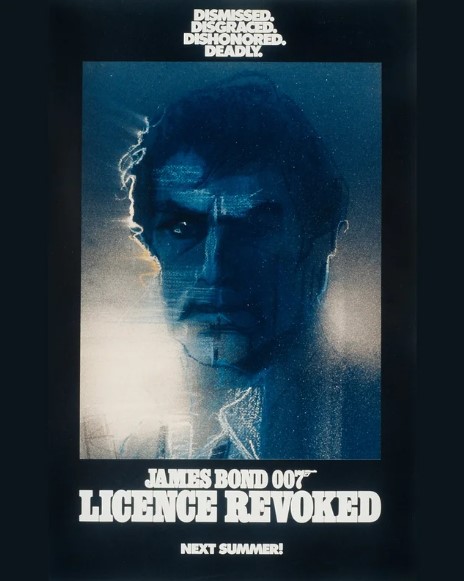
Also the much darker and more violent nature of the adventure this time around led to both the BBFC and the MPAA considering the original cut of the movie to contain excessive and realistic violence. They requested some reshoots and additional cuts. Sanchez punishing Lupe with a stingray tail, Krest’s death, Bond taking on a diver with a speargun on Krest’s yacht, and Bond’s revenge on Killifer were all significantly toned down from their original versions.
Even so, Licence To Kill became the first Bond film to garner a PG13 certificate in the US and a 15 certificate in the UK, even after these cuts. People who have seen the removed scenes in full say they would have pushed the movie into R-rated territory.
A truncated publicity effort, last-minute cuts, and a certificate that prevented many young fans fo the franchise from seeing the movie in theaters acted as headwinds as Licence To Kill was launched into one of the toughest, most competitive summers in cinema history. Lethal Weapon 2, Ghostbusters II, Indiana Jones and the Last Crusade, and Batman all landed in theaters in the same season.
The result was a movie that was still profitable but underperformed both expectations and the rest of the franchise.
Storm clouds were once again gathering around James Bond. Cubby Broccoli’s health was starting to fail, and MGM/UA was to be sold for $1.5 billion to Qintex, an Australian-American financial services company, which would spark an intense legal battle.
Do You Expect Us To Talk?
Stark: First of all, can we just agree that I will spell “Licence” the UK way, and you can use the US spelling, and damn consistency?
Wrenage: I am not sure how comfortable I am with this “C Act” you have implemented with your British powers. If this article was some sort of ship, I might be inclined to throw all the Cs overboard and call it “The Outpost C Party.”
Stark: You would need French, Dutch and Spanish help again if you want to go there.
So recollection time, perhaps also confession time. Licence To Kill was the first ever movie that I went to see on my own in the theater. It remained the only movie I had ever seen on my own in a theater until Avengers: Infinity War which I watched alone to write a review of. I guess I just never really liked going to the theater on my own. It was out in the toughest cinema season ever, with Batman, Ghostbusters 2, and Indiana Jones 3, among others. My friends were all broke or bored of the movies after constant trips there, so I went alone.
Wrenage: Predator 2 was the first movie I journeyed to completely solo. Going to movies alone never bothered me. Just like going to high school sports games alone, high school dances alone and other social functions alone never bothered me. Wait…what are these watery emissions coming from my eyes? Why do my lips blubber? Am I having a seizure?
Stark: The hilarious thing was that I was back in the UK and only 14 years old when it came out. It was a 15-certificate movie over here. So I remember (this is cringe-inducing) I dressed up a bit to look older to get into the theater. But this was the late 80s, so dressing up a bit involved borrowing my older brother’s leather jacket with rolled-up sleeves. I probably reeked of whatever the 80s version of Axe body spray was too.
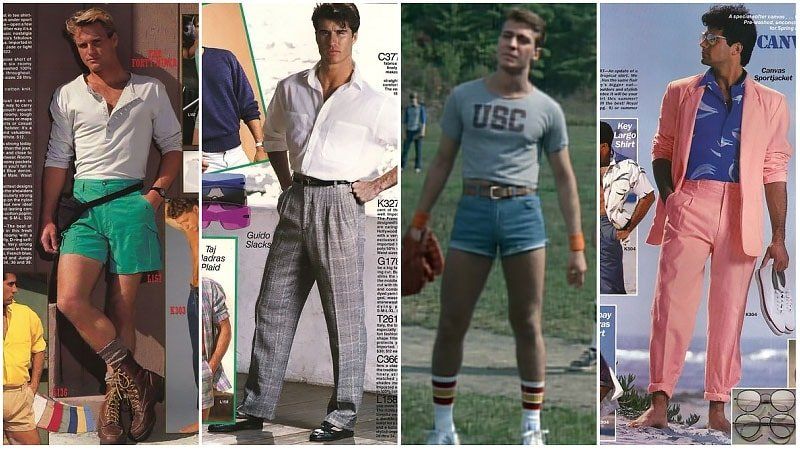
Wrenage: You’re so cool, Brewster! Much like your wardrobe upgrade, License to Kill did a decent job upgrading whatever weak points The Living Daylights had. For example, the villain presence is much improved. Despite this, License to Kill still doesn’t quite feel like a Bond movie. The Living Daylights felt like Never Say Never Again — Bond filtered through a different production company. License to Kill feels more like a high-end 80s action movie. And that’s okay.
Stark: The thing is, Licence To Kill is a classic example of a movie undergoing critical re-evaluation sometime after release. Various challenges saw it get lost in the shuffle. It was dismissed by a lot of critics at the time, too. Yet the more I think about it, the more I can see it climbing up through the tiers.
Ranking And Rating
Let’s get to the ratings and rankings. Wrenage and Stark will give their opinions on the Bondian elements found in Licence To Kill and come up with a score and ranking to place them appropriately in their league table of all things Bond.
Bond
Stark: Bond is a complete and total bastard in this. There really is no other way to describe him. An utter bastard. As a fan of Fleming, I am so here for this!
Wrenage: Licence to Kill plays more to the strengths of Dalton’s Bond than The Living Daylights did. Dalton doesn’t have to waste time trying to woo Maryam d’Abo in this movie. He is out for revenge and gets to be cold-blooded. He throws guys to sharks, spearguns guys who kill his friends, frames people to get killed by decompression chambers and impaled by forklifts, feeds people into shredders, and burns people alive. No Queen and Country in this one. Bond is out for himself.
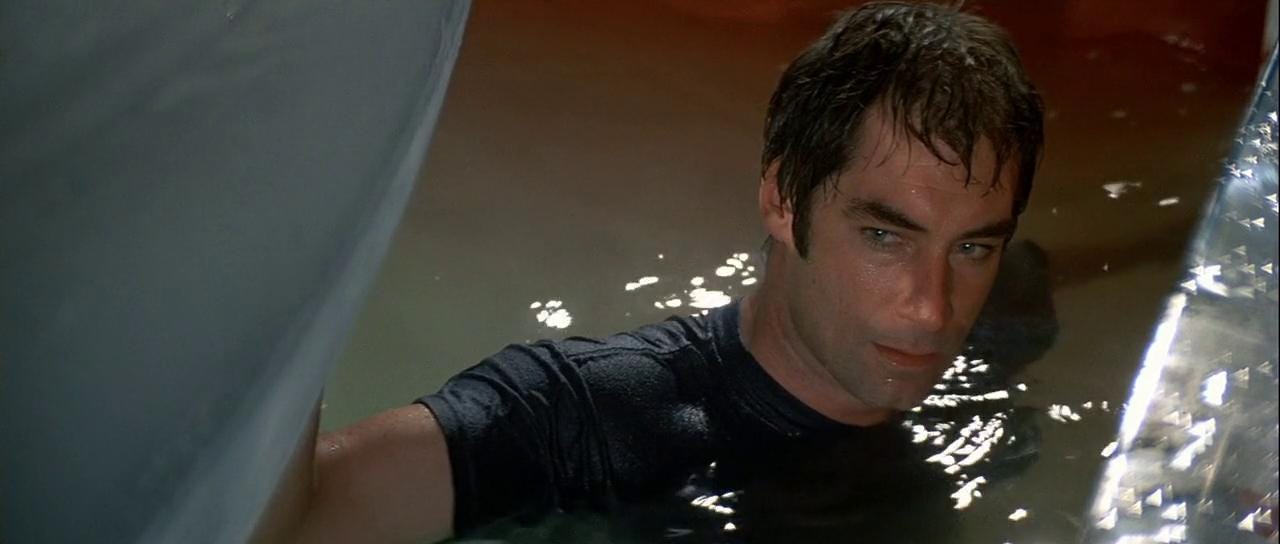
Stark: When you take The Living Daylights and Licence To Kill in the round, you really do feel that Dalton’s portrayal was ahead of its time. I think audiences struggled with the jump from Moore to Dalton, but without him, I don’t think much of Brosnan’s era, and definitely Craig’s portrayal, would even have been possible.
Wrenage: I can see that. I know of some viewers who checked out of the Dalton Bonds completely once Roger hung it up. I never had an issue with License to Kill personally. I liked it from the get-go. This might be due to parental influence, as I distinctly remember seeing it in the theater with Pa, and he said, “That was a good one,” when we exited. So, in our household, it was never treated as lower tier.
Stark: Just like my Dad, it sounds like your Pa remembered the books and when the early Connery movies were released, so appreciated his Fleming. Revisiting Licence To Kill I find a lot to like. An awful lot. Dalton is right up there among the good things. Still not sure what the hell the makeup department were trying to do with his hair this time around though.
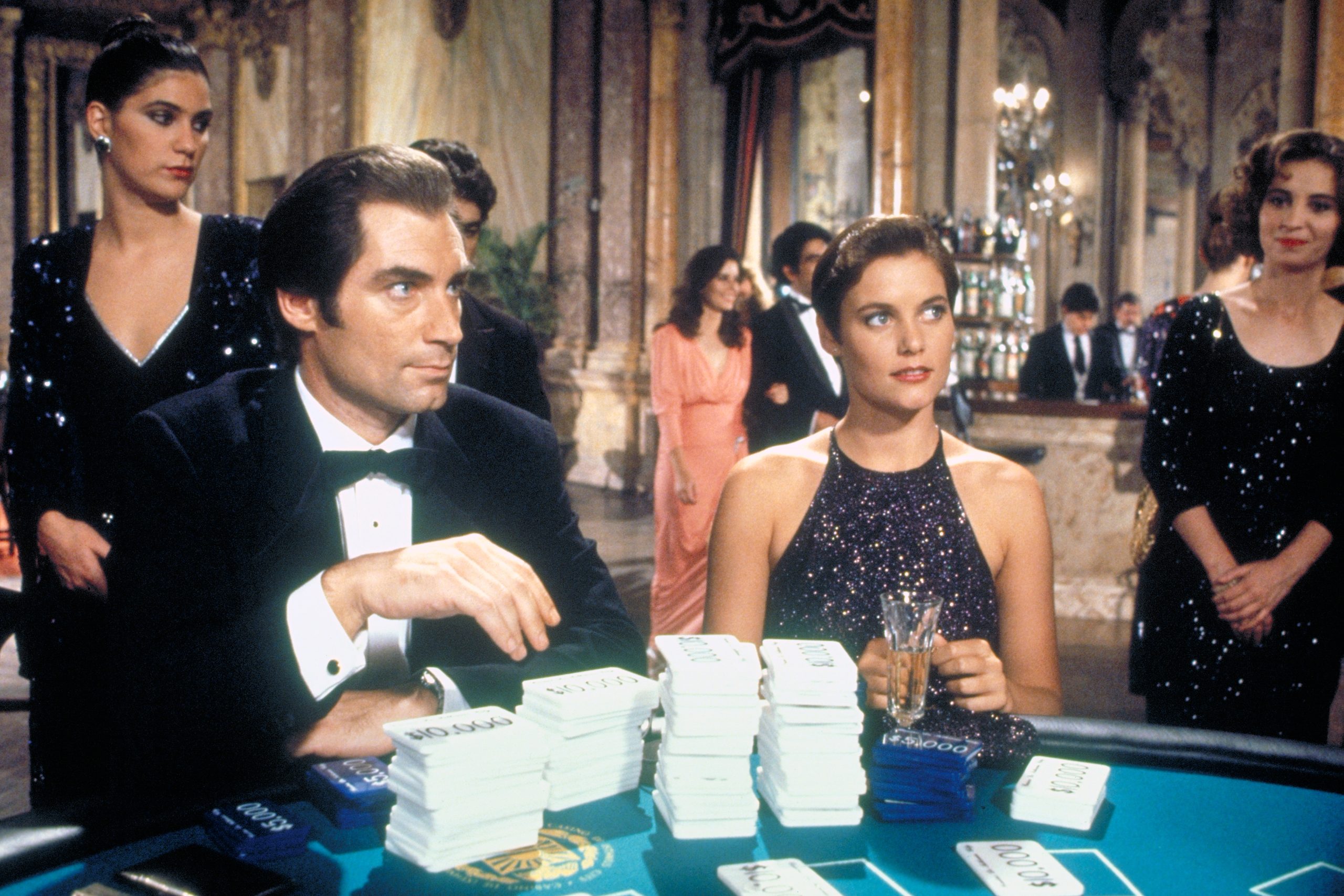
Bond Girl
Wrenage: Carey Lowell has her moment in the sun on License to Kill. Otherwise, her biggest credits are Griffin Dunne and Richard Gere, and they might be considered debits… Lowell is a good Bond girl. She gets to do a variety of things in the movie beyond being ornamental: she shoots holes in walls, does assistant work and even gets to woo Wayne Newton. Lowell also receives a makeover. Pretty sure no other Bond girl cuts her hair off mid-film.
Stark: Wig, unfortunately. She’s another Bond girl who has a few things going on. Again, you are forced to laugh at the critics who complained about Bond girls being outdated when the franchise was showing women kicking ass for years.
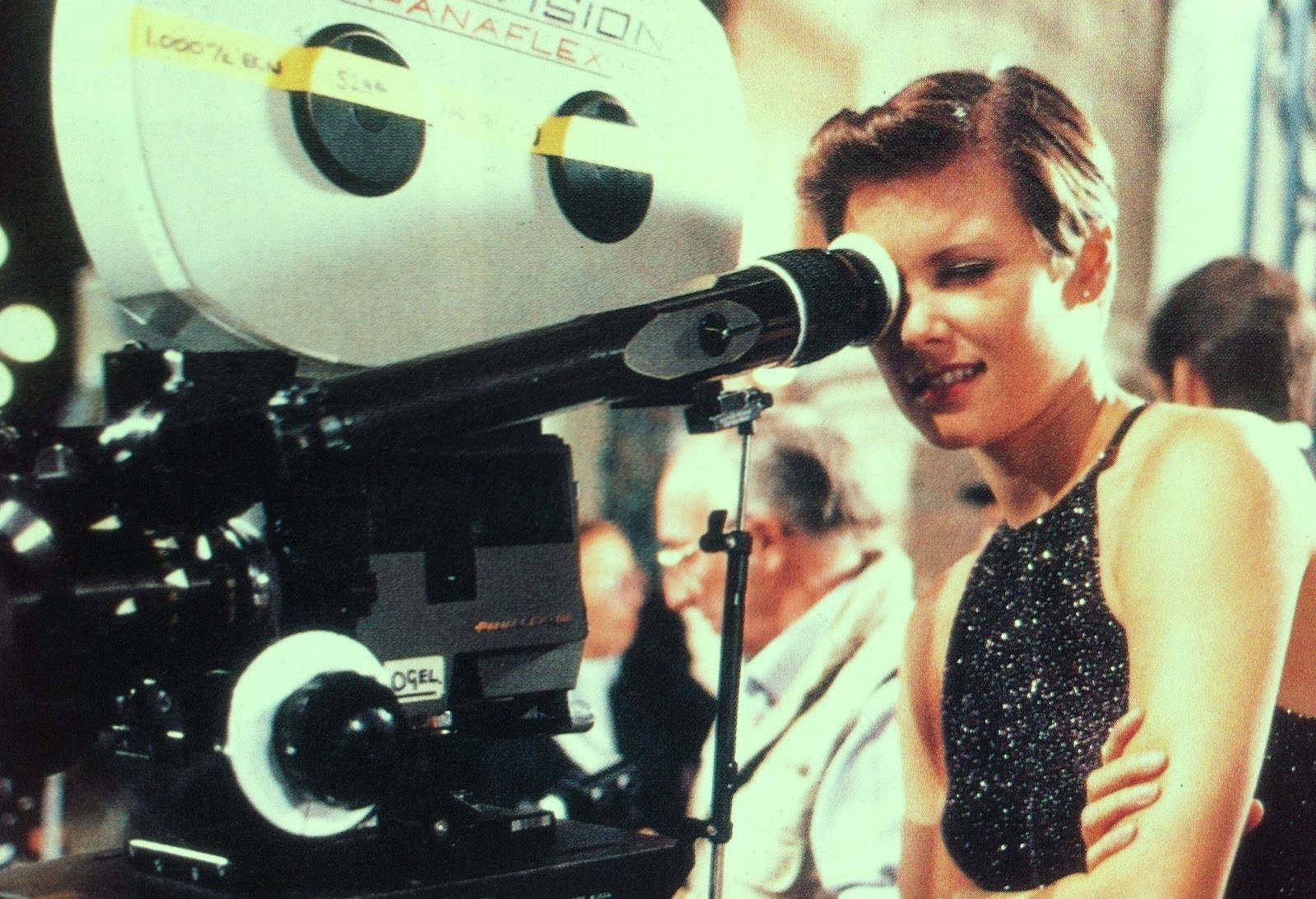
Wrenage: Meanwhile, Talisa Soto is less impressive as Sanchez’s mistress. She is mainly ornamental. Nevertheless, she was able to parlay the role into being cast in a Mortal Kombat movie. That’s something, at least.
Stark: Very, very pretty girl. Certainly more model than actress, but she’s certainly capable of that slinky-ness that the role requires.
Villains
Stark: I love Robert Davi in this. I hadn’t really thought about him all that much in the overall pantheon of Bond villains. Having rewatched this movie through a critical lens, he is absolutely excellent in the role.
Wrenage: One thing that stuck out to me on this rewatch was just how much of the movie Robert Davi is in. If one sat down and recorded the minutes, Davi might have more screen time than Dalton. In that regard, Sanchez quietly ends up as one of the series’ greatest villains.
Stark: I was going to say the same thing. He is not quite up there with, say, the absolute perfection of Michael Lonsdale as Drax, but he’s actually close. He’s also a Bond villain who feels genuinely frightening, being so realistic. Top-tier villain for me, which surprised me.
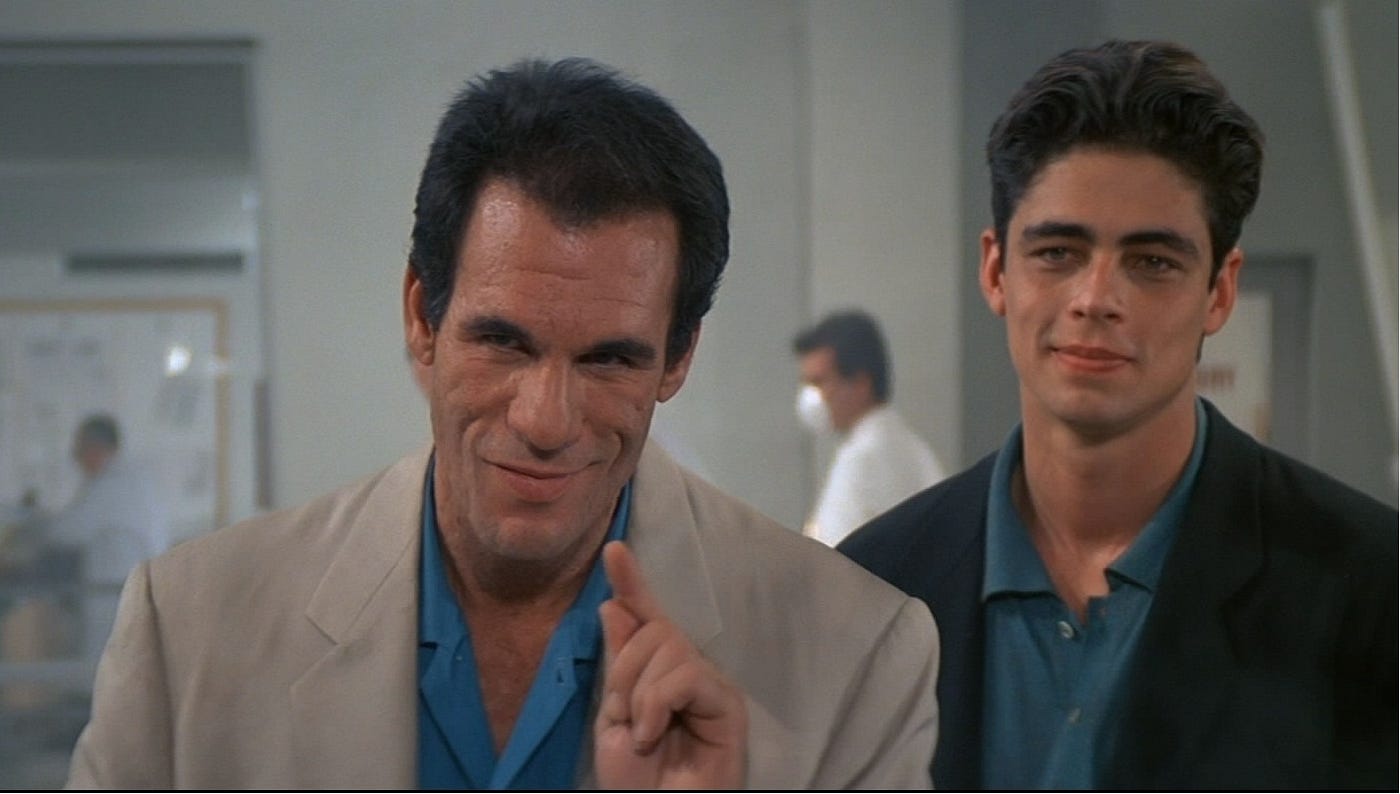
Wrenage: Davi is slimy, cool, and dangerous all at once. Sure, his skin looks like burlap, but credit where credit is due. He owns the movie. He also gets some good one-liners. When asked what to do with the money his former partner exploded on, Davi says, “Launder it.” Yeah, it is completely on-the-nose, but Davi’s delivery is so dry that it works.
And the villain gallery doesn’t stop with Davi. Anthony Zerbe is a great addition as a weaselly sub-villain. Like Davi, he appears to be having more fun than Dalton.
Plus, throw in a young Benicio Del Toro at his most ethnic, Everett McGill, Don Stroud, and even Jimmy from Seinfeld, and License to Kill is positively bursting at the seams in villain department. Upon reflection, this might warrant the highest villain score ever!
Stark: I like that Sanchez’s crew are quite distinct from one another. Rather than an amorphous blob of bad guys, you have Truman Lodge, Colonel Heller, Krest, Killifer, Dario, all fulfilling different roles in the machine.
Wrenage: I especially enjoy that scene where Zerbe is talking about how all his male fish are bred to get fat while he pats his belly. Then he looks around to see if Bond appreciated his joke, and Bond isn’t even listening. Zerbe’s character seems genuinely hurt that he didn’t make his visitor laugh. That’s a great little character moment that passes by virtually unnoticed, but it shows these performers were into their roles.
Plot
Stark: I like how they lifted scenes directly from the novel of Live And Let Die and then wove them into the narrative. Bond doesn’t really have anyone at all, so coming up with a trigger to make him go on a revenge spree is tricky. The central idea is solid – what if somebody really, really pissed off James Bond?
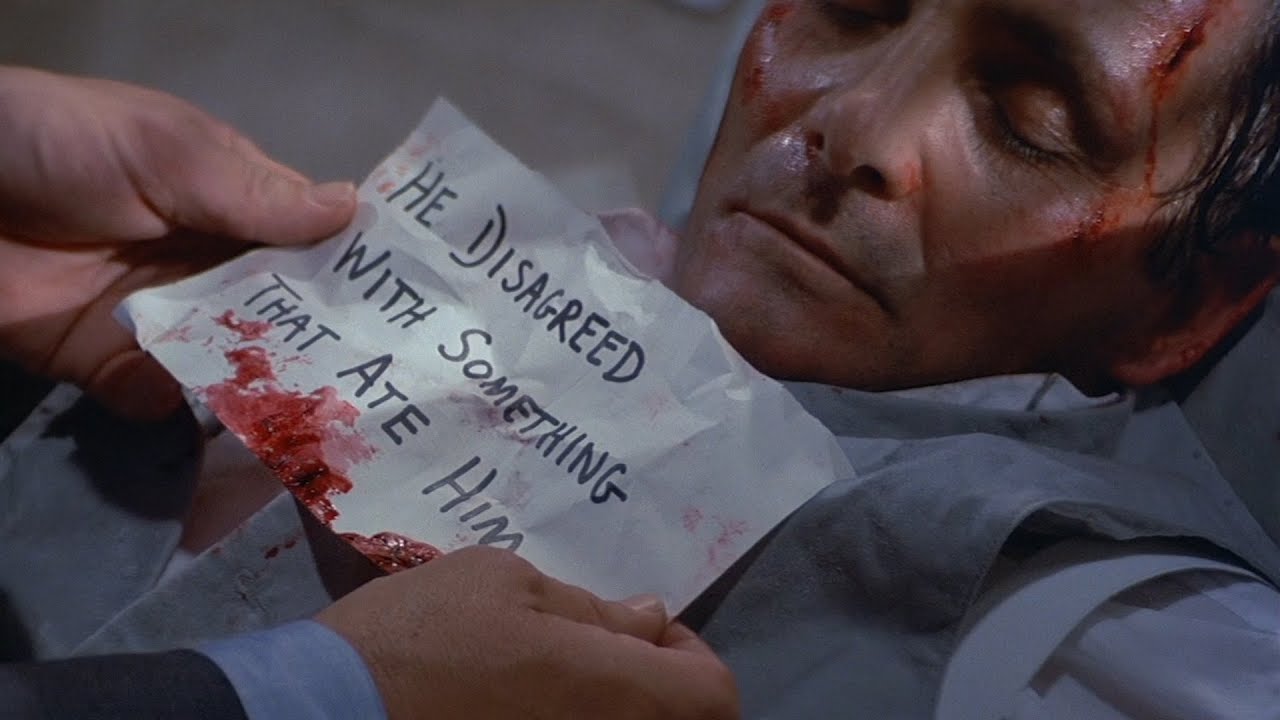
Wrenage: License to Kill is an entertaining, easy-to-follow revenge tale. It’s fun to watch Bond weasel his way into Sanchez’s operation and take it down from the inside. All the character actions make sense, for the most part. Even the Bond Girls have definite places in the proceedings. Wilson and Maibaum did a fine job writing this one. Speaking of Wilson, you can hear his nasally voice over the radio when Bond and Felix are on their way to catch Sanchez in the pre-title.
Stark: Spotting the Wilson cameo is a fun game for any Bond fan.
Wrenage: Some other clever plot points are the way Sanchez uses a meditation cult as a front and smuggling cocaine in gasoline. They even found a way to work in ninjas!
Stark: It wouldn’t be the 80s without ninjas, making their first appearance in Bond since You Only Live Twice. Now I am just sitting here wistfully reminiscing on 80s ninjas. Revenge Of The Ninja will always have a special place in my heart… anyway, I digress. I really liked the idea of using the televangelist broadcast to set the drug price and place the orders across the world.
I particularly like that Sanchez has no plan for space lasers and nuclear weapon heists. He simply wants to make himself even more filthy rich on drug money, and is the DEA doesn’t get off his back he’s simply going to start shooting down airliners to make his point.
Wrenage: I remember when I wrote a loving tribute to Revenge of the Ninja before LMO blew up, and it was lost to the ether. I think I still have it saved, though. Maybe I will recreate it for you someday. This will make up for my lower scores on The Living Daylights.
Stark: I love that dumb fucking movie like dumb chicks like to destroy Star Wars.
Action Sequences
Wrenage: Since this is a high-end 80s action film, it needs to deliver in this department. It is not on par with other 80s action films, but it is workable. Bond’s escape from Krest’s boat is well done. The waterskiing maneuver to hijack the drug smuggler’s plane is aces. Surely, they took inspiration from The Road Warrior with the climax of the film. I expected to see Bruce Spence flying the airplane. For the most part, the action doesn’t stray too far into wacky either. The tractor-trailer wheelie is probably the most egregious example.
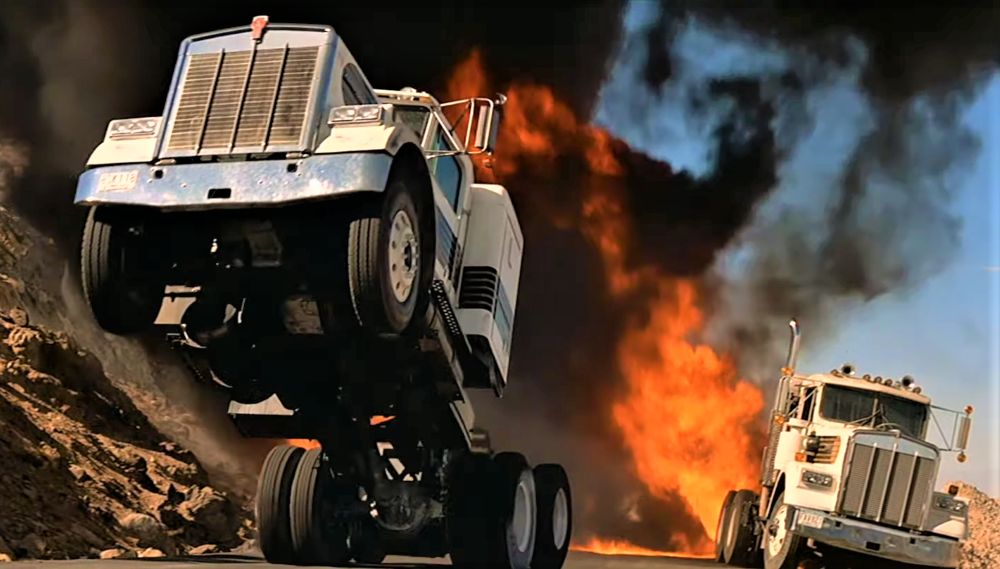
Stark: I would describe it as classic Bond, but almost deliberately understated. He goes fishing for a plane from a helicopter before parachuting into a wedding. He barefoot waterskis to escape a troop of bad guys. There is an absolutely massive vehicular chase with huge explosions and stunts. When you write it down in words like that, it just screams “Bond!” And yet, the whole thing feels deliberately toned down from Moore.
If it was Moore, he wouldn’t need a helicopter at the start as he’d have had a jetpack in his underpants. Then the pre-title would have ended with him foisting himself on a bridesmaid like a rapey uncle.
Pre-Title Sequence
Stark: It’s cool that it’s all a funny thing that happened on the way to Leiter’s wedding. It is funny watching Bond and Leiter run around in their morning coats.
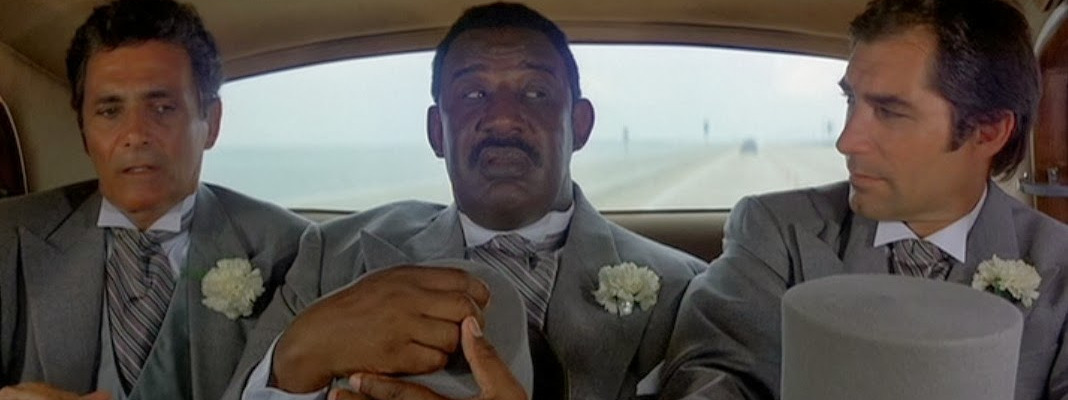
Wrenage: The pre-title is more cute than thrilling. Still, it’s a decently clever gag. Parachuting down the wedding is a good capper. It makes one wonder if BJ Worth and crew finagled a contract to be on every Bond movie in the 1980s. I did like the way Sanchez scraps the wing of his plane on the runway as he takes off. That’s another fun little character moment that shows real thought put into things.
Stark: As the commentary above says, apparently there was a pretty violent whipping scene filmed for the pre-title. I think I remember reading somewhere that Lupe’s “boyfriend” meets a more graphic end too, after all he did promise her his heart.
Wrenage: Did some character carry around a lizard tail to whip people with in the books? That seems very Fleming to me.
Stark: Sure did! It’s a stingray tail and in the book The Hildenbrand Rarity it is Milton Krest, on the Wavekrest, that uses it to beat his wife. He calls it “The Corrector”. Also in the book he dies in a way that is at least a little related to his fate in Licence To Kill. Hildenbrand was used as the name of the rare book shop that featured in Spectre. Bet you are sorry you asked now…
Theme Song
Stark: Thank God they didn’t go with the Flick/Kamen/Clapton theme. It’s absolutely awful. I have heard it. It sounds like a 1980s TV cop show theme. This Gladys Knight theme didn’t do a lot for me at the time. On revisiting it for this re-watch, I found myself liking it a lot more. It’s just got a great riff in it based on the horns in Goldfinger.
Wrenage: After two killer songs, we are kind of back in the standard mode again, but it is still better than the streak leading up to A View To A Kill. Gladys Night belts it out, and the song has an epic quality to it. You are right. It grows on a person.
Alas, Michael Kamen further solidifies making License to Kill not feel like a Bond movie. Kamen’s score very much echoes his work on Die Hard. It is not a Bond sound at all.
Stark: It gives me that real Lethal Weapon vibe. It is very “1980s American Action Movie” though. This is weird, as Glen and the producers said at the time that they felt he was close to Barry in spirit. I can’t see it, myself.
Wrenage: It is hard to trust anything people in Hollywood say about an upcoming movie. The continual haze of cocaine powder that hangs over the city probably affects cognitive ability. Probably…
X-Factor
Stark: Hmmmm… there is something nagging me here. The interior sets built on sound stages in Mexico seem to combine with what may be some questionable lighting decisions and film stock choices at times. I am not saying it looks like a Mexican soap opera, but if a woman with big breasts came into shot and started screaming and waving her hands around, it wouldn’t be a complete surprise.
Wrenage: Salma Hayek was working in Mexican soap operas at the time, so it could have happened. Again, when we are this deep into the series, I am having a hard time identifying X-factors. I mostly just notice little tidbits. For example, one of the ninjas, Stuart Quan, was in a Kato Kaelin werewolf movie, Night Shadow, that I wrote about before LMO exploded, as well. I would also like to mention Wayne Newton. He amused me with his lothario/con man/televangelist schtick. The way he leads Lowell into his meditation chamber is gleefully predatory.
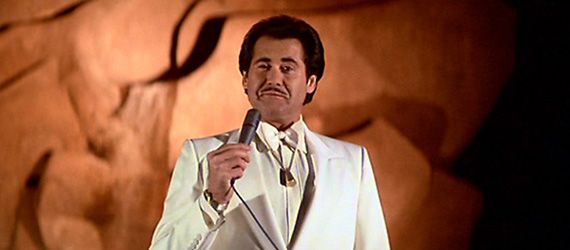
Stark: There is just enough of Professor Joe Butcher in this. Any more and he would be annoying or lapse into parody. He’s a light touch of comic relief in the proceedings that doesn’t wear out his welcome.
Even though the plot takes a bit of a leap to put him there, it is also great fun to see Q out in the field with Bond and give him the most to do in any Bond movie until they beefed up the role from Skyfall onwards.
Wrenage: Oh yeah, I forgot to mention Q. His part in the story was also well done and a nice nod to keeping continuity in the series. I did have one other recollection about License to Kill. Back in the days when satellite TV got scrambled, I heard that if you left a scrambled channel on for 20 minutes or so, it would turn unscrambled. I tried that with License to Kill, and it actually worked! Man, how things have changed. One was so desperate to view stuff back then, you would stare at a scrambled image for 20 minutes just in the tiny hope it would maybe become visible at some point. Now…all viewing is at one’s beck and call.
Stark: Kids today won’t believe us when we tell them.
Scoring Breakdown
| Stark | Wrenage | |
| Bond | 8 | 8 |
| Bond Girl | 7 | 7 |
| Villain | 9 | 10 |
| Plot | 8 | 8 |
| Action Sequences | 7 | 8 |
| Pre-Title Sequence | 7 | 6 |
| Theme Song | 6 | 6 |
| X-Factor | 5 | 2 |
| TOTAL | 57 | 55 |
Stark: If you had asked me a few weeks ago, before I rewatched it, where this ranks, I would have scored it lower. Now I am a big fan. It’s definitely improved with age, and when you watch so many Bond films in a row like this, and are forced to really think about them and write about them, it does kind things to Licence To Kill.
Wrenage: I was always on the License to Kill wagon. Welcome aboard! And, as you can see, I went and did it. Seeing how the villain gallery was so strong as a unit, I gave it a 10 in that category.
Stark: Is that our first ten of all time so far? I think it might actually be. You went and balanced it out with deadly low X-factor though. What Wrenage giveth, he taketh away.
Overall Rankings
First up – big news! Dr. No has been badly served because we had a difference of opinion on what constitutes a pre-title sequence and a theme song. As a result, the movie picked up unfairly low points in those two categories. That is why it was lurking suspiciously low for a classic entry.
Well, we finally did it. We went line-by-line to rectify this fault by applying the average to fill in the missing scores, and it changed things around a bit. Dr. No now finds itself elevated, while others fall to make way.
This also means that wherever it lands, Licence To Kill will be responsible for opening up our 4th tier for the first time in this rundown. Oh, the humanity!
First Tier:
From Russia With Love (61.5)
On Her Majesty’s Secret Service (61)
The Spy Who Loved Me (59.5)
Dr. No (56.5)
Licence To Kill (56)
Second Tier:
Goldfinger (54.5)
Thunderball (53.1)
Live and Let Die (53)
You Only Live Twice (51.5)
For Your Eyes Only (51.5)
Third Tier:
Octopussy (51)
The Living Daylights (50.5)
Moonraker (48.5)
A View To A Kill (48)
The Man With The Golden Gun (38.5)
Fourth Tier:
Diamonds Are Forever (34.5)
Stark: So there you have it. Licence To Kill absolutely kicks the damn door down and then wades into the top tier like it owns the damn place. Meanwhile Diamonds Are Forever slinks into the bottom tier like it just came home and found Licence To Kill in bed with its wife.
That’s A Wrap
Wrenage: Yikes! That is quite a jump for Dr. No! Are you sure you didn’t put your thumb on the scales? Above Goldfinger? And, perhaps, most horrible of all…above A View To A Kill? What in the name of Stacey Sutton is going on here?
Stark: All legit. I even used a pen and paper! It was completely missing two scores between us. As this is a game of averages, that completely cut it off at the knees. Also, I find Goldfinger annoyingly overrated as we discussed at the time, so I am not unhappy with this. A View To A Kill though, well that is between you and dead Tanya Roberts.
Wrenage: Wait…what? Tanya?
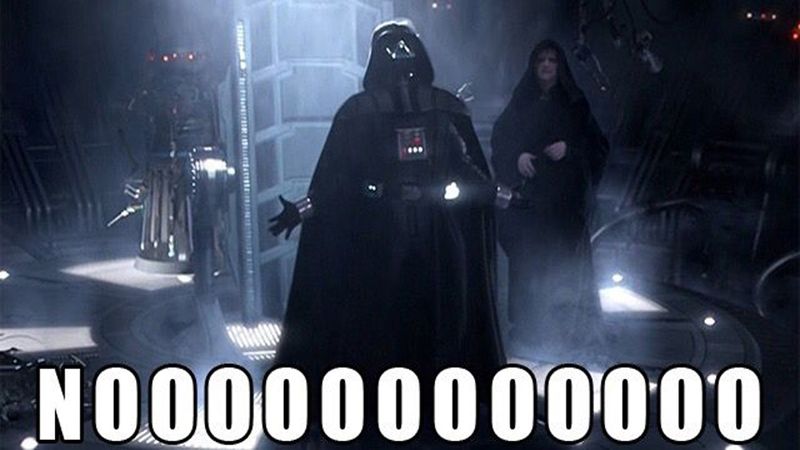
Stark: I fear I have broken Wrenage so we had better leave it there.
And so, already, another era of Bond is over. The Dalton era, and it was over before it really got going. He really was very good as the more Fleming-esque 007. After analysing both his movies over the past few weeks, I am genuinely sad we didn’t get more of him. At least a couple more.
NEXT TIME… There is more legal trouble, and Bond stays off our screens for one of his longest breaks to date. When he comes back he’s changed faces again! Pierce Brosnan picks up the PPK for GoldenEye.
Meanwhile, check out the rest of our Bond On series as we take a walk through all the Bond movies in order: Dr. No, From Russia With Love, Goldfinger, Thunderball, You Only Live Twice, On Her Majesty’s Secret Service, Diamonds Are Forever, Live And Let Die, The Man With The Golden Gun, The Spy Who Loved Me, Moonraker, For Your Eyes Only, a two-way Battle Of The Bonds for Octopussy and Never Say Never Again, A View To A Kill and most recently The Living Daylights.
Check back every day for movie news and reviews at the Last Movie Outpost


